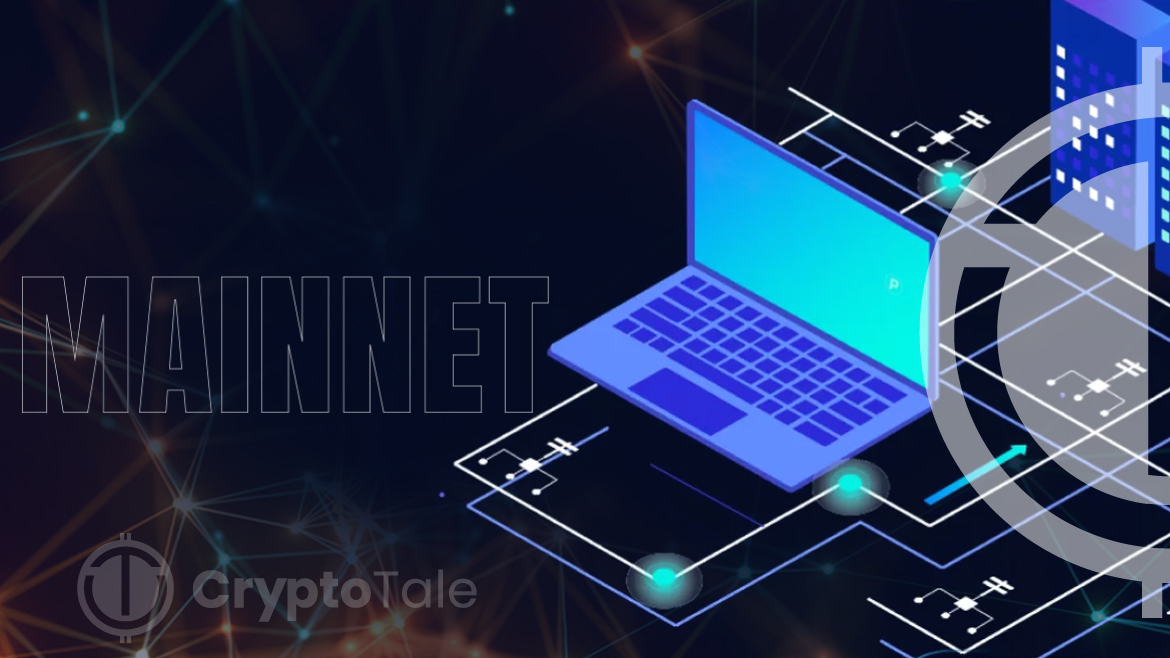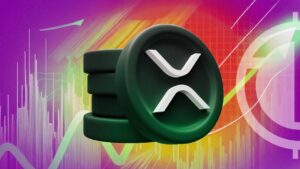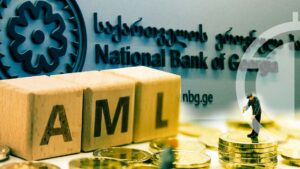
Mainnet is the basic infrastructure of the network where all transactions and operations occur. It signifies a phase where the blockchain is developed and is ready for public use and real-world transactions. Here you can get to know what Mainnet is and how it works.
What is Mainnet in Cryptocurrency & How Does It Work?
Mainnet, short-term for “main network,” is the primary blockchain where cryptocurrency transactions are broadcasted, verified, and recorded on a distributed ledger. It signifies that the blockchain protocols are fully developed, deployed, and ready for public use, in contrast to its counterpart testnet. The mainnet differentiates itself from the testnet by the use of native cryptocurrency. A cryptocurrency belonging to its own blockchain is essential for a mainnet to perform various functions like transaction fees, staking schemes, and more. Launching a mainnet is an important step for any crypto project as it signifies that it is ready for real-world transactions.
The mainnet might get upgraded on a regular basis to improve its network capabilities, functionality, or security issues, resulting in the creation of forks. Forks are of two types: soft forks, which are backward compatible change, and hard forks, which are not backward regions.
Before launching a mainnet, the testnet is used by developers to check for any flaws. The testnet launch helps to troubleshoot all the bugs encountered for the blockchain network features. In simple terms, testnet signifies blockchain networks that are not developed and are in the process of developing. The mainnet consists of fully developed blockchain networks where users can send and receive cryptocurrency.
The mainnet uses consensus mechanisms like Proof Of Stake (PoS) or Proof of Work (PoW) to verify and validate crypto transactions. In PoW, miners are those who solve complex computational puzzles and get the right to verify transactions and add new blocks to the blockchain. In PoS, validators are chosen based on the staked coins to create blocks.
Before launching the mainnet, the project will go through an ICO, IEO, or any other means to generate the fund necessary. Most startups use the Ethereum network and release their own ERC-20 token. Once the token is listed, it will be open for investors to invest.
Once the funds are in place, the project will continue the testnet phase. After the testnet launch’s success, the project’s mainnet version will be on air with its own native coins rather than ERC-20. This is when a process called mainnet swap takes place, where ERC-20 tokens are swapped for the native coins on the blockchain. Once the swap is done, the remaining ERC-20 tokens are destroyed to ensure that only new coins belonging to the blockchain are used.
What Are The Mainnet Components?
Mainnets are the backbone of a blockchain, and the essential components that comprise them include Network Nodes, Cryptocurrency, Consensus Mechanism, and blocks.
1. Network Nodes:
A blockchain network comprises numerous nodes, with each node functioning as a server within the mainnet. Mainnets need the help of network nodes to verify, process, validate, and record user transactions. The nodes can be categorized into two: Full nodes and Light nodes.
- Full nodes can store the complete history of what happens in a blockchain. To ensure the ledger is always available, even in case of a node failure, a copy of the ledger accompanies each full node. Furthermore, it can validate transactions independently.
- Light nodes can only store a subset of the blockchain data. Although it helps improve the network scalability, it needs the help of full nodes for validations as they lack the necessary computing resources.
Blockchains like Ethereum, Solana, and Bitcoins accommodate both nodes to optimize network performance and balance scalability, security, and decentralization.
2. Cryptocurrency:
For a mainnet to be launched, it needs its own cryptocurrency. It is used for conducting various transactions within the network, like buying assets, rewarding miners, validators, and stakers for their contribution in validating transactions, and keeping the mainnet safe and secure. The use cases for native tokens vary, and because of this, not all blockchain networks have their own currency.
3. Consensus Mechanism:
Blockchain networks operate based on the consensus mechanism. It is used to validate and record all transactions on the blockchain. Proof of Work (PoW) and Proof of Stake (PoS) are the most commonly used consensus mechanism.
4. Blocks:
A block is where validated transactions are added. It is a data storage unit where all transaction data, timestamps, and cryptographic hash pointing to the previous block in the blockchain are stored. The chronological order of the blocks makes them secure and tamper-resistant. If the block is large, it can impact the network scalability and processing speed.
What Are The Differences Between Mainnet and Testnet?
| Testnet | Mainnet |
| Simulated environment for experimenting with cryptocurrencies | Live and operational blockchain network |
| Test cryptocurrency with no real value | Native cryptocurrency with real economic value |
| Developing and testing the blockchain network | Real-world transactions involving native cryptocurrency |
| Zero financial risk | Inherent risks in finance |
| Developer-focused community | User and investor-based community |
| Transaction frequency is high | Transaction frequency is low |
| Transactions are free due to the testing environment | Transactions require a fee due to real-world environment |
| For testing purposes, there are many different IDs | The blockchain has only one network ID |
| The number of nodes is small | A large number of nodes |
| No need for mining | Mining and validating require rewards |
Examples of Mainnet:
Here is a list of some of the most popular mainnets in the blockchain ecosystem.
Bitcoin Mainnet:
The launch of Bitcoin mainnet in 2009 revolutionized the world with its blockchain concept and other technologies powering it. It is the main network where Bitcoin transactions occur between users. Bitcoin mainnet uses a PoW consensus mechanism for validating transactions.
Ethereum Mainnet:
The Ethereum mainnet was launched in 2015 and became well-known for fostering the innovation of numerous smart contracts and decentralized applications. It uses the proof of stake mechanism after an update in 2022 and has greatly contributed to the growth of the decentralized finance (DeFi) ecosystem.
Polygon Mainnet:
The Polygon mainnet, launched in 2017, provides an easy and user-friendly framework for various blockchain projects to build on Ethereum. It enhances the scalability of Ethereum, thereby making transactions cost-effective and faster. On Polygon, users don’t have to worry about network congestion when interacting with dApps.
Advantages of Mainnet:
Security:
Once the mainnet is live, it becomes subject to various blockchain security features like cryptographic encryption and consensus mechanism. This ensures the safety of transactions while preventing fraud.
Decentralization:
The main strength of mainnet lies in decentralization. The controlling authority is distributed to various nodes across the network, preventing centralized control while promoting transparency.
Interoperability:
Some mainnets are designed to make them compatible with other blockchain networks, thereby allowing interoperability. This allows data and assets in a blockchain to be transferred or shared between various networks and fosters a well-connected blockchain ecosystem.
Community Engagement:
The launch of a mainnet signifies a major milestone in project development. It indicates the project has made huge progress and is going live, attracting the attention of stakeholders and the community.
Disadvantages of Mainnet:
Scalability Issues:
With the increase in user adoption, the network must manage a large amount of transaction volume. This will lead to congestion and slower transaction processing speed.
Security Vulnerabilities:
Although the security features of a mainnet are robust, there will never be a lack of attacks in hopes of finding new vulnerabilities and posing threats to the user fund.
Difficulty in Upgrading:
To upgrade a mainnet, you need to achieve consensus among the network participants, which could prove to be much more challenging than anticipated.
Resource Intensive:
Mainnets require a lot of resources like computing power, storage capacity, and others to run the nodes that are spread all over the network. This can pose a barrier to the entry of potential node operators.
Conclusion:
For any crypto project, mainnet will be their goal as it represents the change from an idea to a fully functioning network. Launching a mainnet is a milestone where the project goes from testing and developing into a new world capable of handling real-world transactions.














